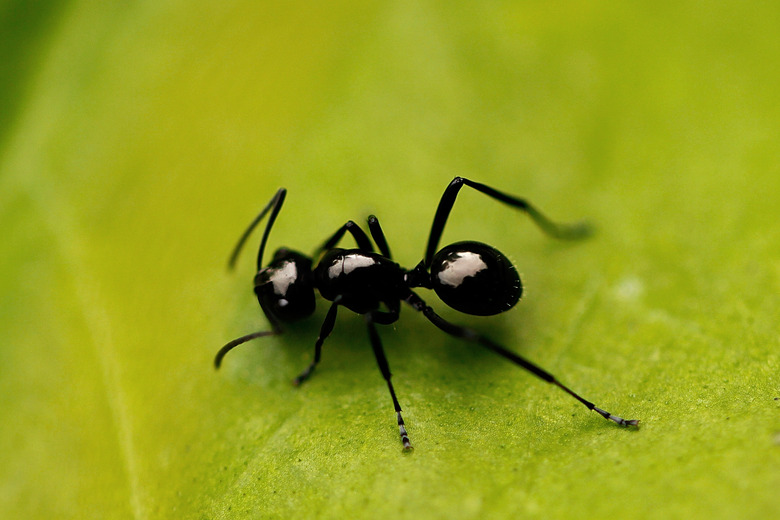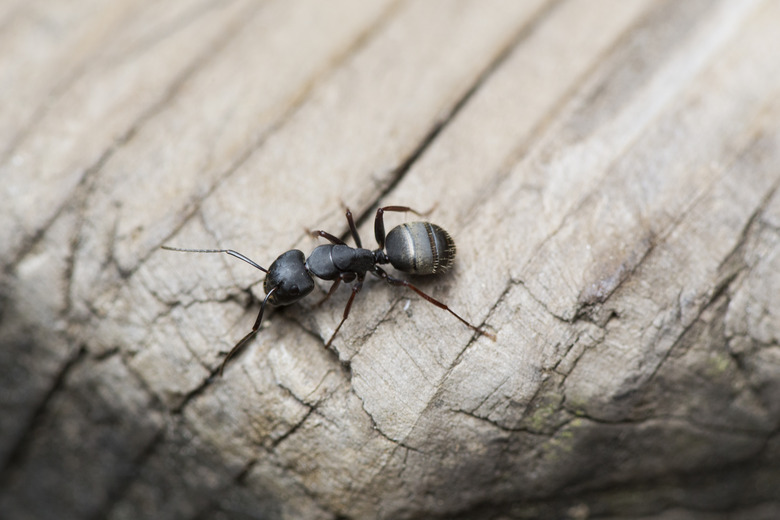What Is The Difference Between Black Ants And Carpenter Ants?
We may receive a commission on purchases made from links.
When it comes to dealing with an ant infestation, it's critical you know which type of ant you're dealing with, which means understanding the difference between carpenter ants vs. black ants. These two types of ants my look somewhat similar, but while black ants are reasonably harmless to humans, carpenter ants can actually damage your home. Knowing the difference between the two is critical in knowing how to best eradicate an infestation and understanding how pressing the issue is.
Black Ant Basics
Black Ant Basics
There are several species of black ants, including one simply called "little black ants" (Monomorium minimum). Another common species is the "odorous house ant" (Tapinoma sessil), which smell a bit like rotting coconut if you squash them. There are many other species of black ants as well. All share a few commonalities, including the fact that they won't harm you or your house.
Although seeing a trail of black ants going on a safari across your kitchen countertop is unnerving, it's not a dangerous situation. These ants come in for the food and happily show themselves back out when they're finished gathering it. They don't nest indoors, preferring to make small anthills in soil. You are most likely to see them during the summer months.
It can take a little time to get rid of black ants, but it's not difficult. Seal as much food as you can in airtight containers and wipe down counters, tabletops, and other food preparation surfaces frequently. If you still see ants, sprinkle some diatomaceous earth where you find them or place an ant trap nearby.
Carpenter Ant Basics
Carpenter Ant Basics
Carpenter ants (Camponotus pennsylvanicus) behave quite differently from black ants, and these behavioral differences provide one way to tell the two ants apart. Unlike black ants that come and go, carpenter ants want to be roommates. You'll typically see carpenter ants in the spring or the fall while they're looking for wood in which to nest.
These ants tunnel through wooden structures, where they nest and build a home. Contrary to popular belief, carpenter ants don't eat the wood like termites do. They instead hollow it out to make rooms and tunnels for the colony, leaving behind small piles of sawdust in their wake.
Carpenter ants are much more difficult to get rid of than black ants and may require an exterminator. Diatomaceous earth and ant baits can help, but eliminating carpenter ant colonies often involves dusting inside the wooden structures where they live with a powdered insecticide. If you do find a nest opening in your wood, resist the urge to plug the hole. Doing so forces the ants to chew a new one to get back out, possibly adding to any damage that's already been done.
Identifying Black vs. Carpenter Ants
Identifying Black vs. Carpenter Ants
Black Ant
- Smaller than carpenter ants (about 1/4 inch)
- Always black in color
- Have an uneven shaped thorax
- Two distinct body sections between head and thorax
- Have a small stinger
Carpenter Ant
- Can hear chewing noises in a carpenter ant nest
- Bigger than most black ants (about 1/2 inch)
- Can be red and brown as well as black
- Have heart-shaped heads
- Have two sets of wings
When determining whether you have black or carpenter ants, your first step is to listen. If you're quiet, you can often hear chewing noises when you get close to a carpenter ant nest. You can also tap on your walls and listen for ants scurrying. Hearing the ants moving and chewing is equal parts fascinating and disgusting, but it's a good way to know the type of ants with which you're dealing.
Black ants and carpenter ants look different. Carpenter ants are bigger than most black ants, measuring about 1/2 inch in length as opposed to the scant 1/4 inch or less measurement of the black ant. Carpenter ants can also be different colors, including red and brown. They are often black but don't have to be that color.
Carpenter ants have heart-shaped heads and slightly different bodies than black ants. Carpenter ants have a perfectly rounded thorax, while black ants have a much more uneven shape. If you grab a magnifying glass, you'll also see that black ants have two distinct body sections between the head and the thorax, whereas a carpenter ant has only one.
Both ant types may have wings. Carpenter ants, however, have two sets of wings, and the back wings are shorter than the front wings. If black ants have wings, they have only one set. Black ants have a small stinger on the thorax, however, and carpenter ants do not.

